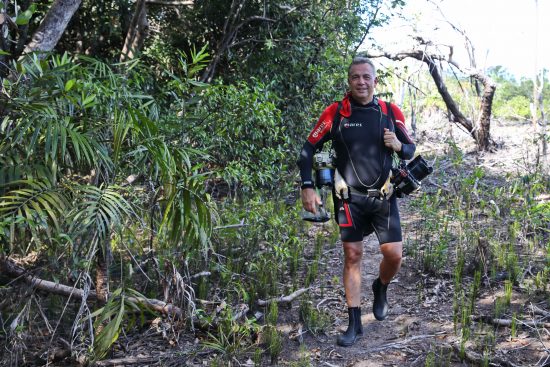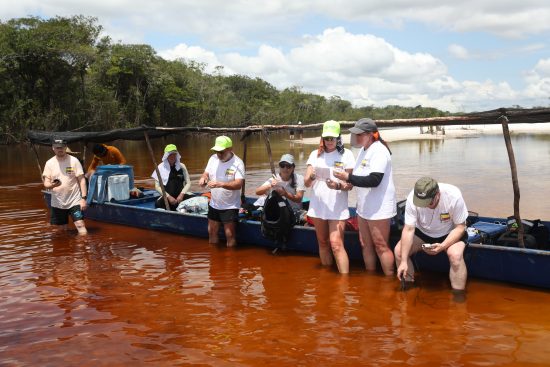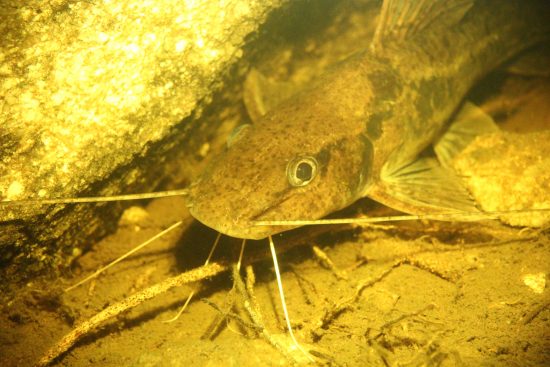







During the JBL research expedition to Colombia in November 2022 to learn more about the habitats and habits of aquarium fish, there was also the opportunity to snorkel at night in the black water of the Rio Atabapo. Many fish, especially catfish, only come out at night and are really not seen during the day.
Black water is so-called because of the dark color of the water. It becomes tea colored due to humic substances that dissolve from the jungle soil in the water - but it remains crystal clear. During the day, free diving in black water is quite special. You dive into a brown nothingness, after a few meters you see neither the surface nor the bottom and dive deeper and deeper. At some point the bottom appears out of nowhere with wood, stones and fish. Only the piranhas accompany you on the way to the bottom and watch curiously to see what you, the intruder, are doing in their river. They do not bite, in contrast to the scary stories in the cinema.
The way up is just as special: The surface is not visible. Only the display on the dive computer shows how many meters still separate you from the surface.
The darkness puts the icing on the cake. The light of a torch shows only brown colored water. The shore is shallow, interspersed with rocks, and the jungle is quiet. The typical jungle sounds of the many jungle movies can be heard very rarely. Howler monkeys would have to be nearby. In the shallow water, only sleeping tetras and cichlids can be seen, but the bank drops steeply and only a few meters from the shore it is worth looking for catfish in the depths. Using a flashing function doesn't work very well in blackwater, as the flash will strobe the turbidity, but with a good light, mounted at an angle above the underwater housing, shots are possible.
We first chose the Mares EOS 10LZ, but exchanged it for the Mares EOS 10LRZ because of the necessary zoom function. It is ideally suited for the small luggage allowance of the flight, only 10 kg, and can be easily mounted on top of the underwater housing (BS-Kinetics with Canon EOS R / 14-35 mm) with ActionCam accessories. Holding the light in one hand and the camera in the other does not work at all. One hand is needed to support and maneuver.
It is simply unbelievable which big fish are down there at night. The really big armored catfish are very shy, but the medium sized catfish, up to 60 cm in length, stay a bit dazzled, calm and photogenic.
In the photos, the light cone of the lamp can be seen as a circle. This looks good, because it gives the impression that the pictures were really taken in the dark. Some of the pictures document catfish species in their natural biotope for the first time. In the sea we know almost everything, but freshwater still contains a lot of undiscovered treasures!
By Heiko Blessin, Biologist (M.S.) and Leader of the JBL Research Expeditions.
Find more photos, videos, information and water test results from the expedition here.
 Mares
Mares 17th February 2023
17th February 2023